Welcome spring, visit spring, and herald the arrival of spring with vinca flowers, whose delicate fragrance spreads to every home!
There are four springs in Dream of the Red Chamber, Yuanchun, Yingchun, Tanchun, and Xichun. Among them, Yingchun and Tanchun are a kind of flower, but Yuanchun and Xichun are not. However, we also have Primrose and Vinca Major, which all belong to the " Spring" generation . Let's take a look at these flowers with the word "Spring" and look forward to the arrival of spring the most!
winter jasmine
Winter jasmine is the first to bloom among all flowers. After blooming, spring comes when all flowers bloom, hence the name. Winter jasmine, plum blossom, daffodil and camellia are collectively known as the "Four Friends in the Snow" and are one of the traditional flowers. Winter jasmine has a dignified and beautiful color and extraordinary temperament. It is not afraid of cold, is not selective about climate and soil, and has strong adaptability. It has always been loved by people.
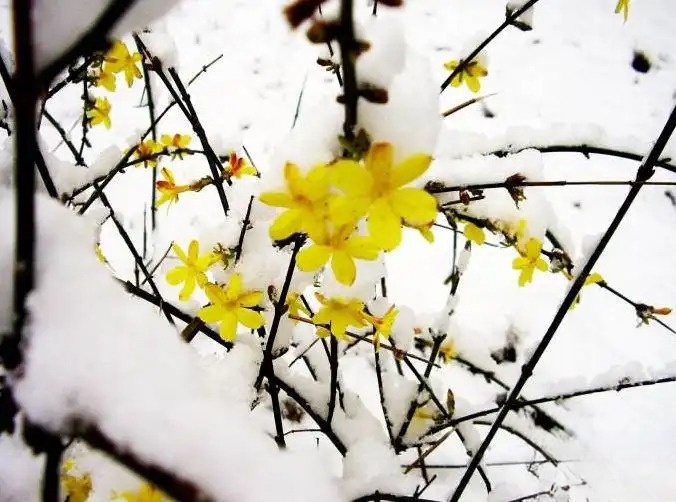
-soil-
Winter jasmine is highly adaptable and not very demanding on soil. It grows best in loose and fertile sandy soil. Winter jasmine is yellow, so it is advisable to use light blue, purple, or black pots when planting to coordinate the color of the pot and the flower.
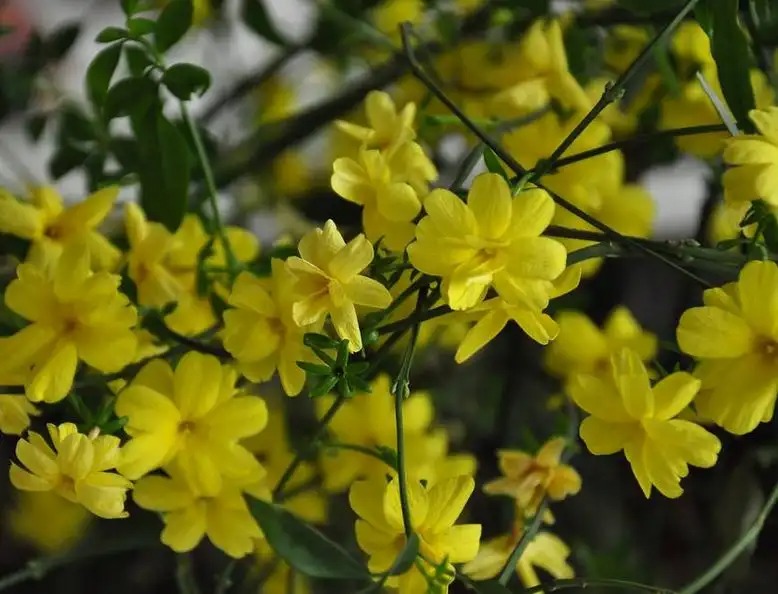
- Watering -
Water the forsythia during its growth period only when the soil is dry, and water thoroughly when you do so to avoid waterlogging in the pot soil, otherwise it will cause root rot. After September, reduce watering for potted forsythia to control the vigorous growth of branches and allow it to safely overwinter.
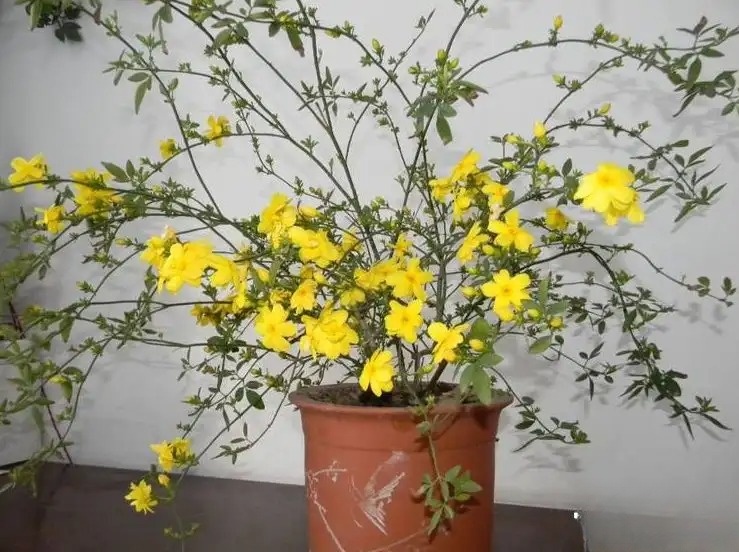
- Fertilization -
In spring, after the flowers fade, you should apply decomposed organic liquid fertilizer 1 to 2 times to replenish the nutrients consumed by flowering and restore the growth of the plant as soon as possible. June to August is the flower bud differentiation period. You can increase the amount of phosphorus and potassium fertilizers used, and pay attention to withholding water to facilitate the formation of flower buds. Fertilization in autumn can increase the plant's cold resistance and promote the development of flower buds. Applying some fertilizer before flowering can not only make the flowers plump, but also prolong the flowering period.
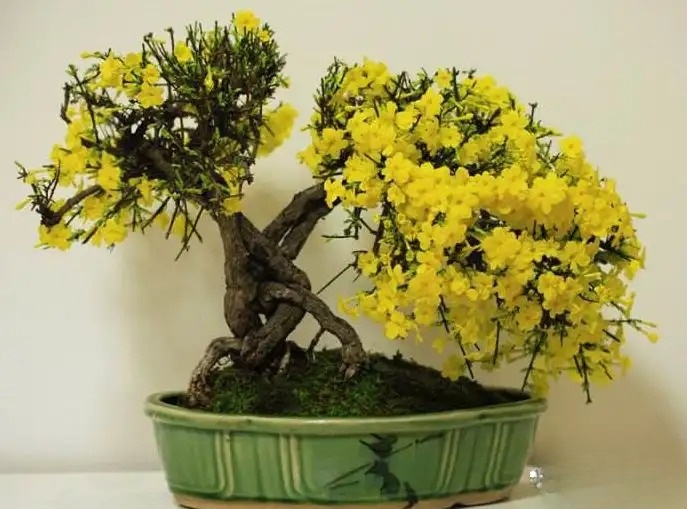
-temperature-
Winter jasmine likes warm and humid climate. After flowering, the room temperature should be controlled below 15℃ to maintain a longer flowering period.
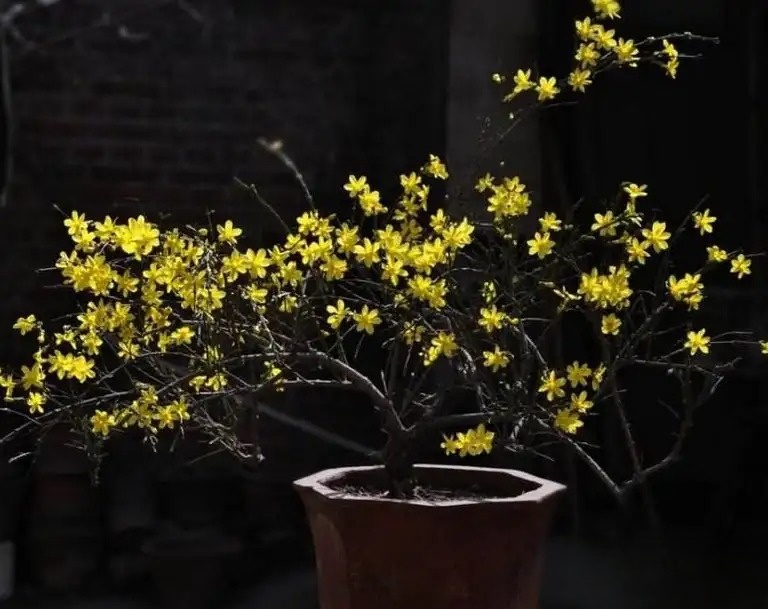
-illumination-
Winter jasmine likes light and is slightly shade-tolerant. It should be exposed to more light before flowering to facilitate bud formation and flowering. However, it does not need direct sunlight during flowering and should be placed in a semi-shaded place in the room.
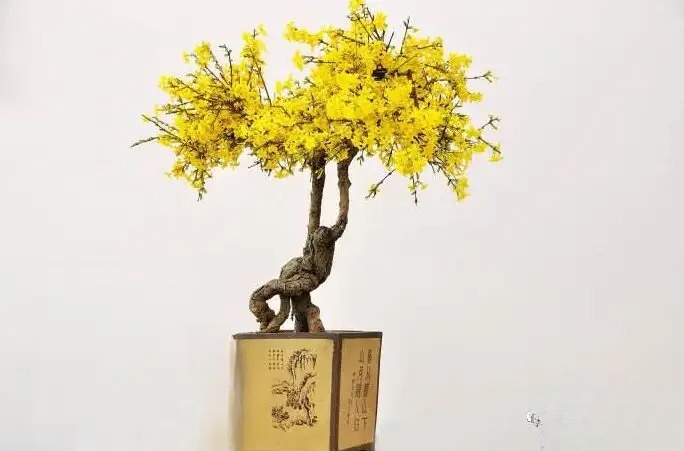
-Reproduction method-
Family propagation is mainly cuttings, but layering and division can also be used. It can be carried out in spring, summer and autumn. Cut semi-lignified branches 12-15 cm long, insert them into sandy soil, keep them moist, and take root in about 15 days.

-Bonsai shape-
The branches of the winter jasmine droop naturally, and the roots are very distinctive, suitable for processing into drooping branches and root-lifting bonsai, usually combining the two. The roots are intertwined and the main trunk becomes a lying trunk or a curved trunk, with branches and leaves hanging down, and a unique style. If cultivated properly, it will be full of yellow flowers in spring, green leaves in summer and autumn, and green vines in winter, full of spring in all four seasons.
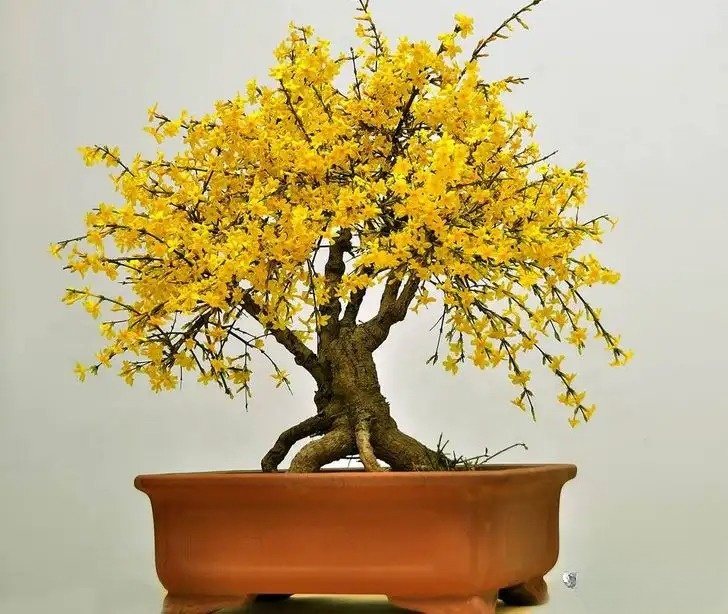
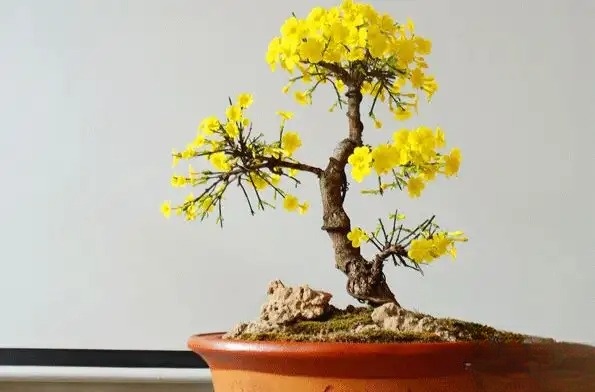
Tanchunhua
The tanchun flower is also called the jasmine flower. It looks similar to the jasmine flower, but the flowers are slightly larger and bloom later, in March. In addition, the leaves of the jasmine flower are opposite, while the leaves of the tanchun flower are alternate, which is also a relatively obvious difference.
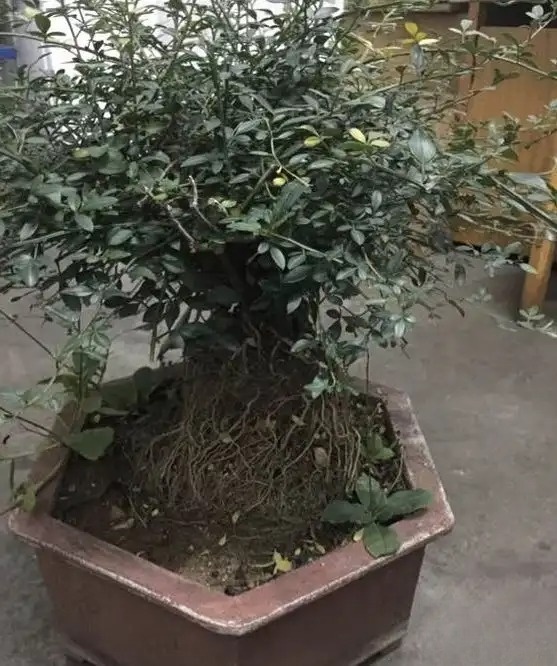
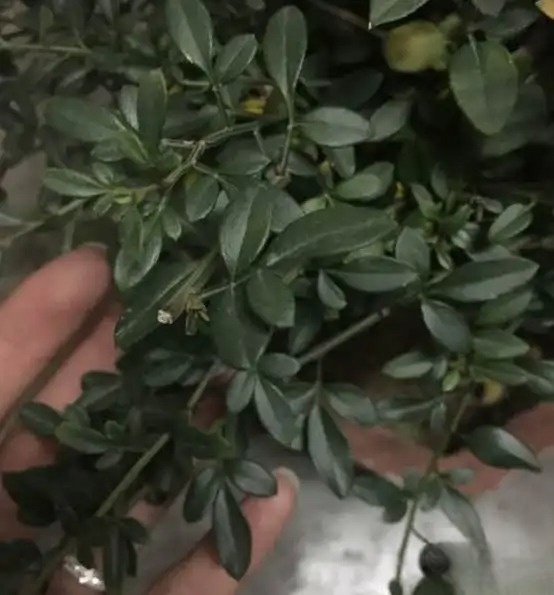
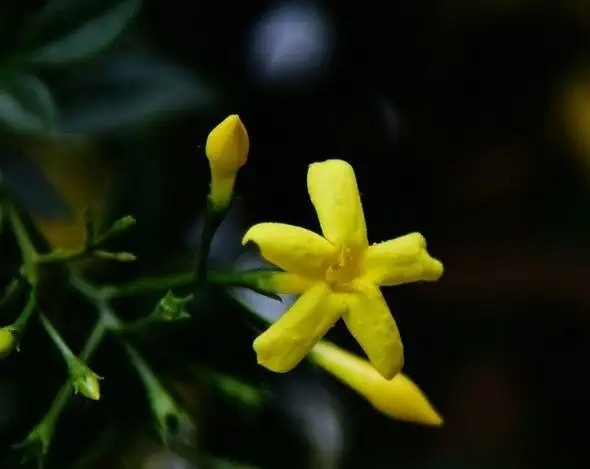
-soil-
Tanchunhua has strong adaptability and is not very demanding on soil. It can be grown in a mixture of leaf mold and garden soil.
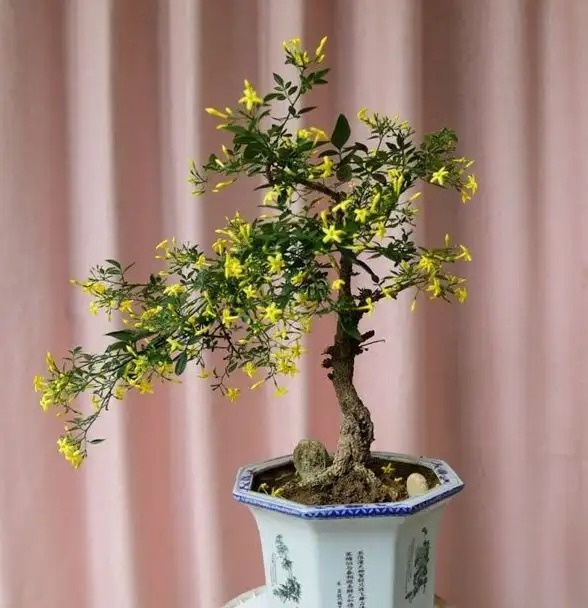
- Watering -
Tanchunhua likes a humid environment, but watering should not be too much to prevent waterlogging and root rot. It can be appropriately moist during the growing period. In winter and rainy seasons, it can be appropriately changed according to the environment, with the soil mainly dry.
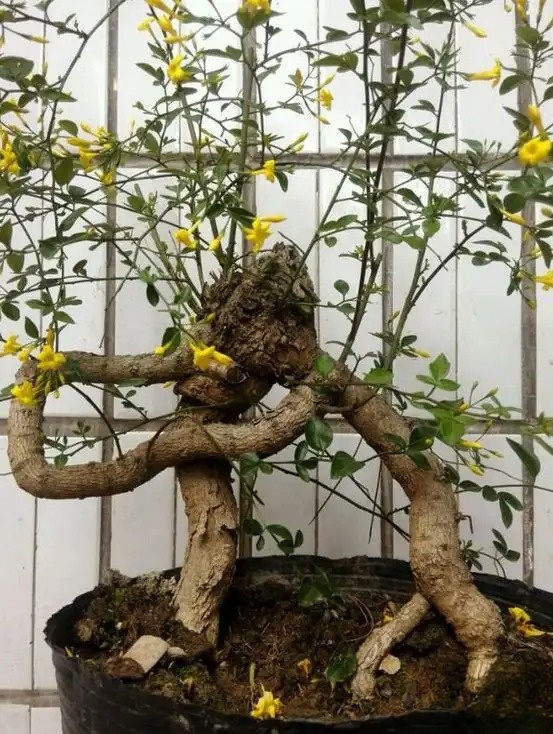
- Fertilization -
During the seedling stage, fertilizer can be applied once every half a month, mainly nitrogen fertilizer. After autumn, thin cake fertilizer liquid can be applied every 10 days or so until buds appear, then fertilization can be gradually stopped.
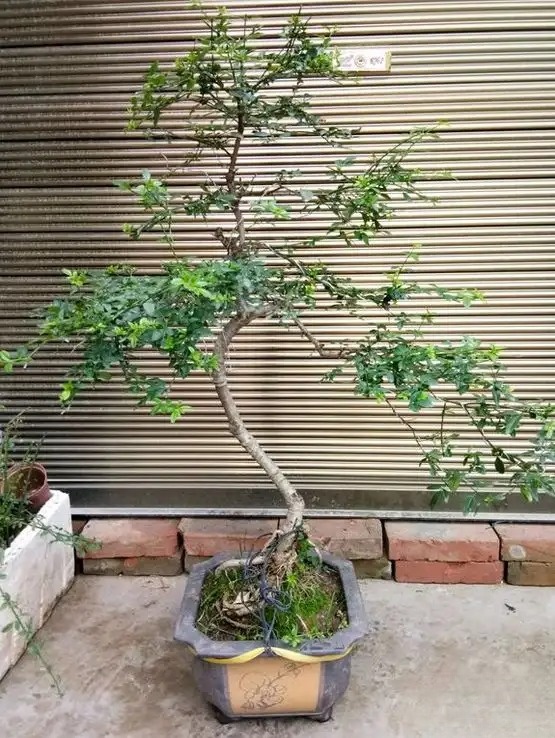
-temperature-
The most suitable temperature for Tanchunhua is 15℃, while the low temperature in winter should not be lower than 5 ℃ , and the temperature in summer should not be higher than 30 ℃ . Attention should be paid to shade.
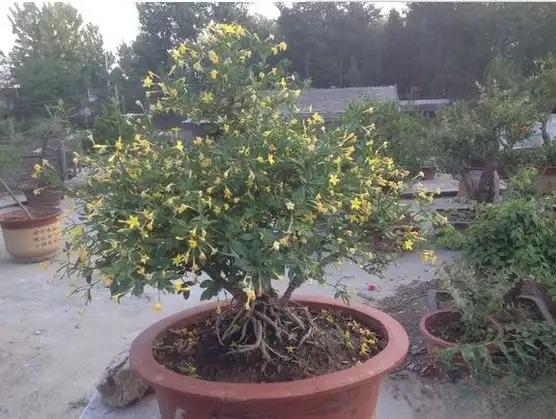
-illumination-
Tanchun flower likes light and can be placed in bright light for maintenance. Pay attention to shade in summer and full sun after autumn.
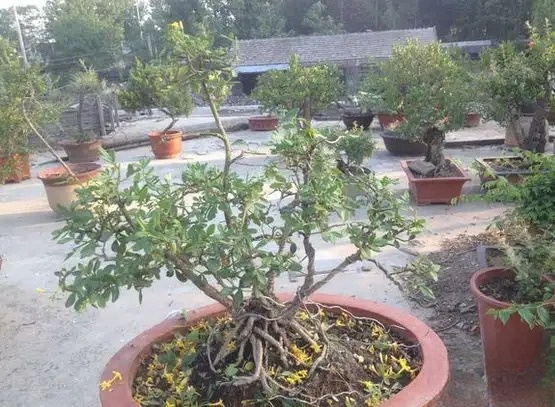
-Reproduction method-
Family propagation is mainly based on cuttings . Cut semi-lignified branches 12-15 cm long, insert them into sandy soil, keep them moist, and take root in about 15 days. Layering, bury the longer branches shallowly in the sandy soil, no need to cut, take root after 40-50 days, and separate from the mother plant for transplanting in the spring of the following year.
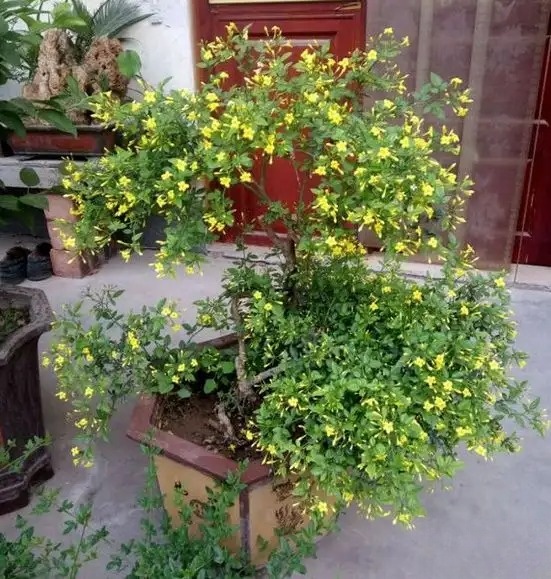
primrose
Primroses are the messengers of spring. When the earth has not yet fully recovered, all flowers have withered, and the frost and snow have not yet ended, they have quietly bloomed in clusters or patches at the edge of the forest, by the stream, and on the grass, full of vitality, telling people that spring is coming. Primroses can withstand temperatures as low as -5℃ in winter.
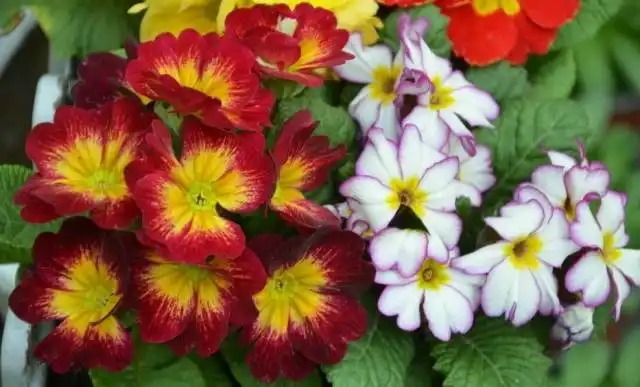
-soil-
The potting soil should be loose, fertile, breathable and acidic soil. You can use 2 parts of leaf mold, 1 part of garden soil and a small amount of base fertilizer as the culture soil.
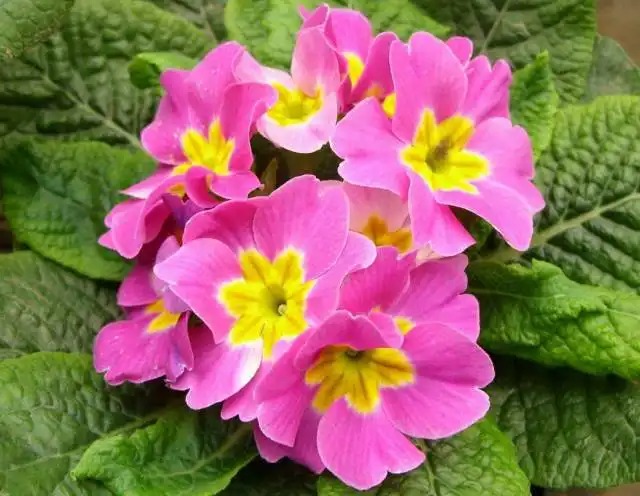
- Watering -
Primroses like a humid environment, but they should not be watered too much. If the soil in the pot is too wet, the roots will rot. In summer, you should pay attention to watering. You can water once in the morning and evening. At noon, when the temperature is high, spray water on the ground around the pot to increase air humidity and lower the temperature, creating a cool and humid climate environment. In autumn and winter, you can appropriately reduce the frequency and amount of watering.
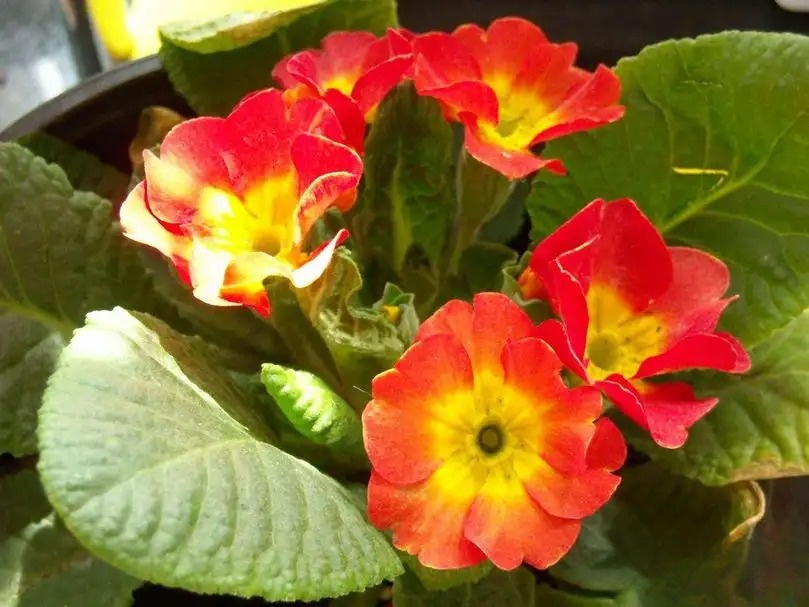
- Fertilization -
During the growing period , apply decomposed thin cake fertilizer liquid once every 7-10 days. In the early stage, more nitrogen fertilizer should be applied to promote the growth of branches and leaves; in the later stage, the content of phosphorus fertilizer should be increased appropriately. At the same time, 0.3% potassium dihydrogen phosphate aqueous solution should be sprayed on the leaves every half a month to promote more bud formation and flowering until buds appear.
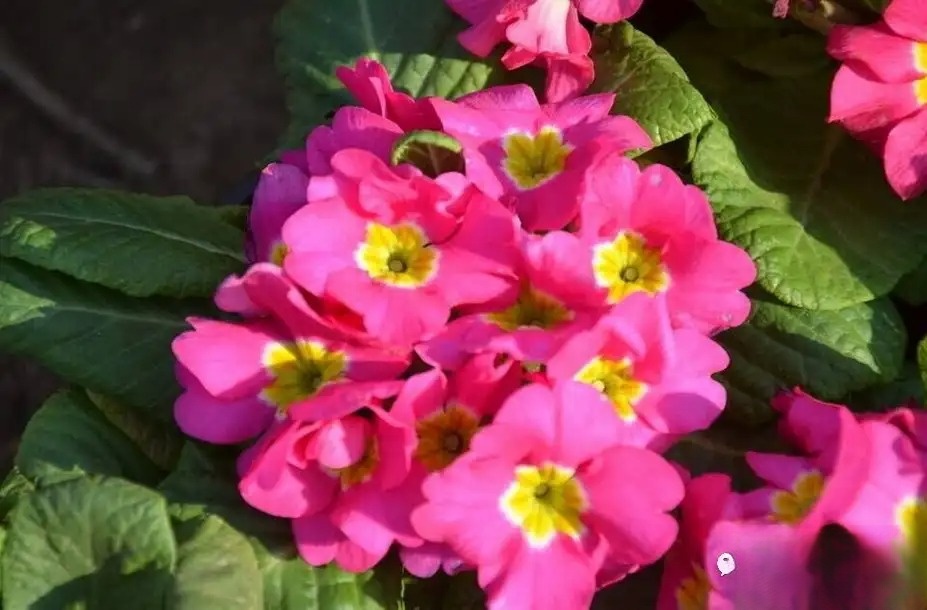
-temperature-
Primrose likes warmth and is slightly cold-resistant. The suitable growth temperature is about 15℃. The indoor temperature in winter should be kept at around 10℃ to facilitate safe wintering. If the temperature exceeds 30℃ in summer, it cannot grow and develop normally.
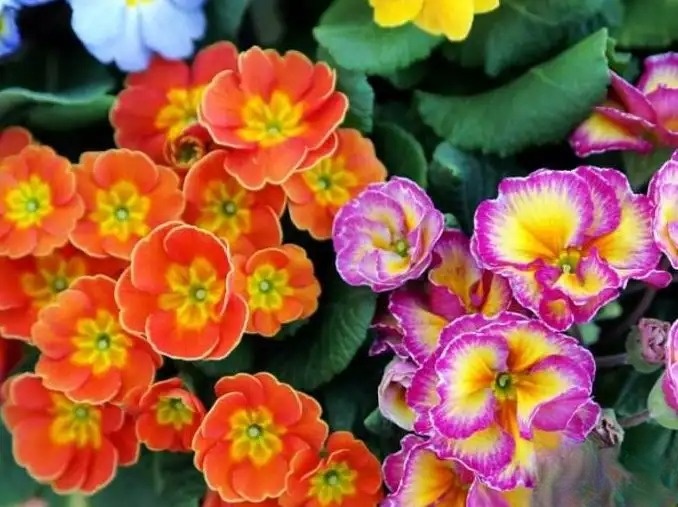
-illumination-
Primroses like light, but avoid strong sunlight. In the summer seedling stage, the potted plants should be placed in a cool, ventilated place with more scattered light. From September, the potted plants can receive more scattered light. From October, the potted plants can be placed under full light, so that they can receive more light in late autumn to promote their growth and flower bud differentiation.
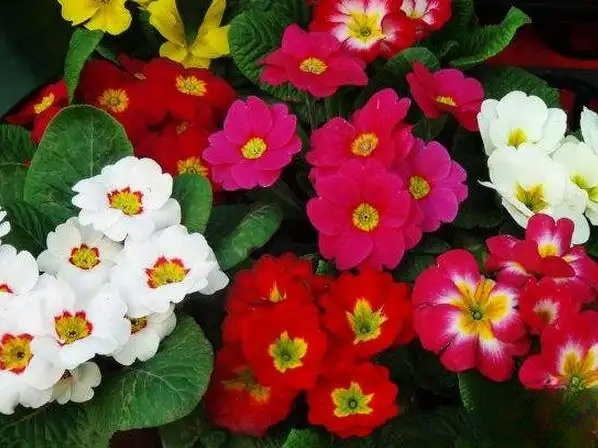
-Reproduction method-
Primroses are mainly propagated by sowing. It is best to sow seeds immediately after collecting them, or store them in dry and low-temperature conditions. Shallow pots are often used for sowing. The potting soil is a mixture of fine leaf humus and garden soil. The seeds are mixed with 4 times fine sand and evenly sown in the pot. Then, the soil surface is lightly compacted with a smooth wooden board to facilitate the seeds to absorb water and take root. There is no need to cover the soil.
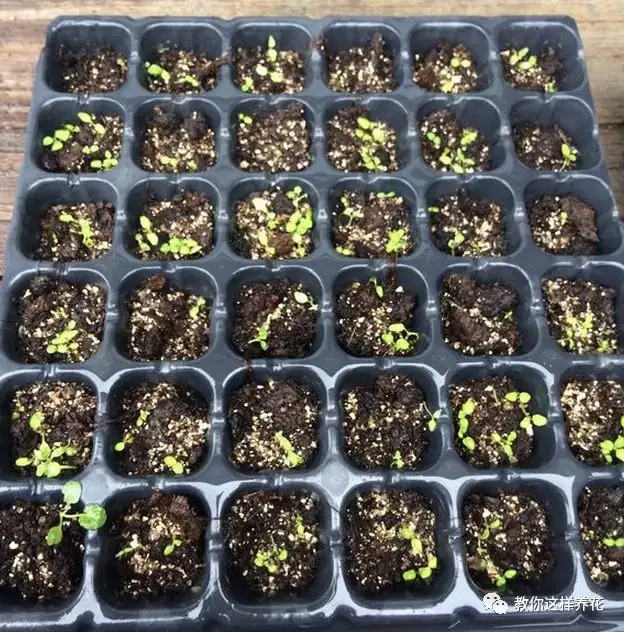
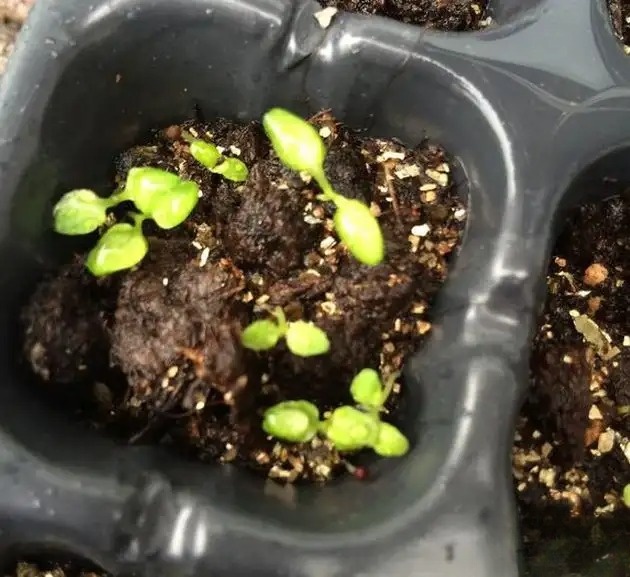
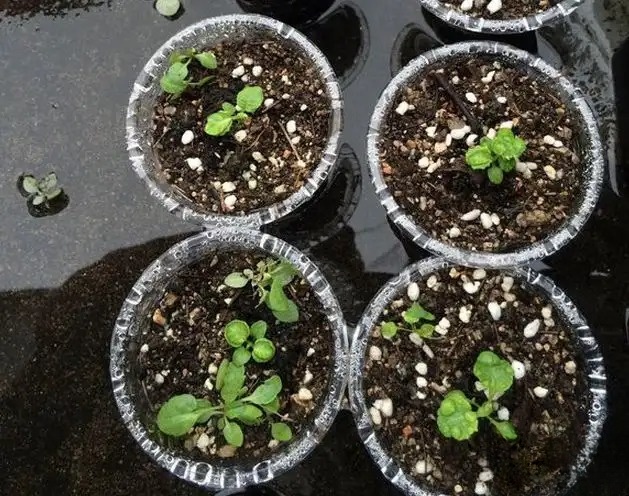
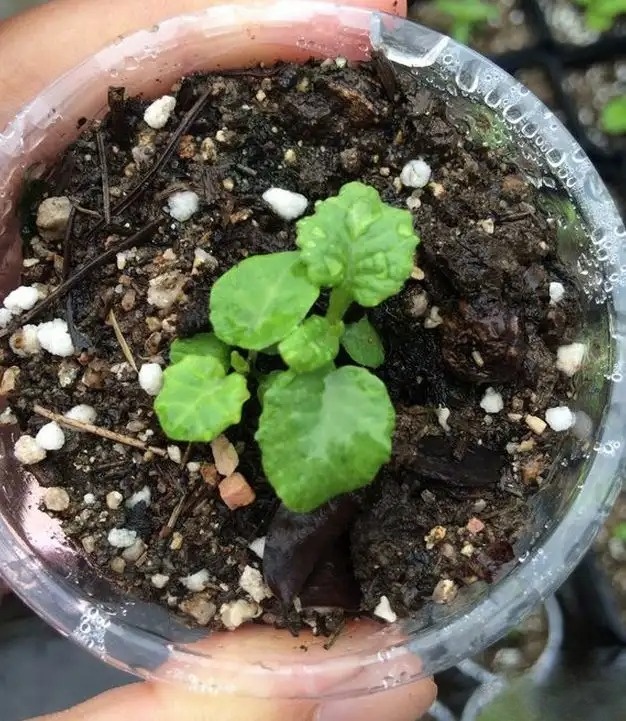
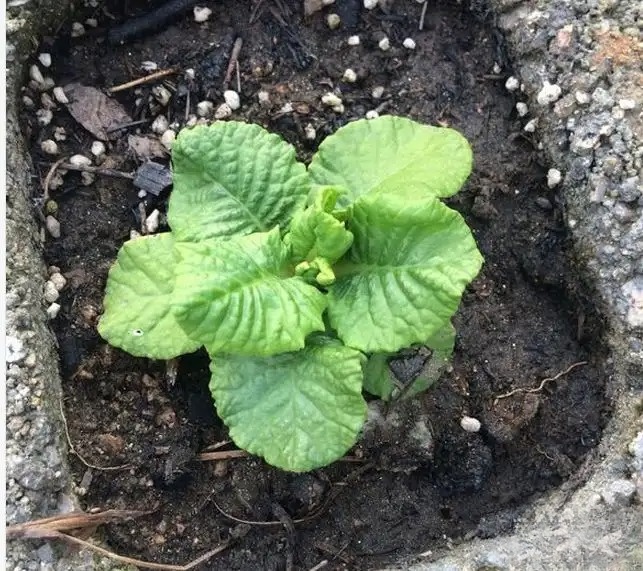
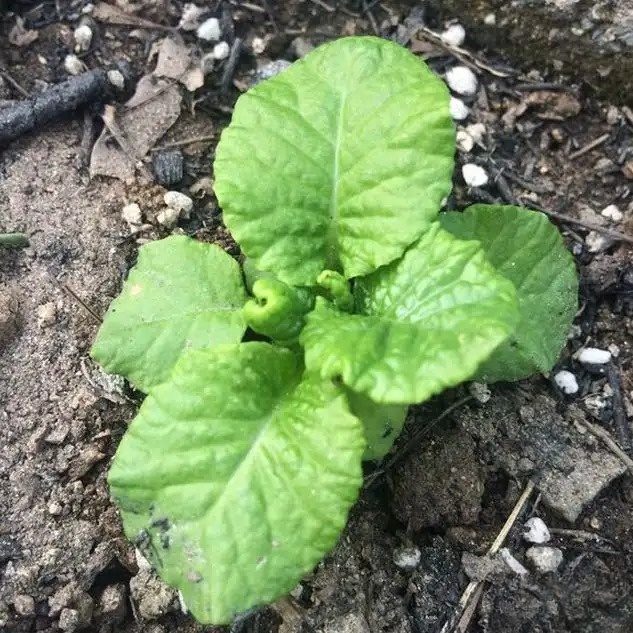
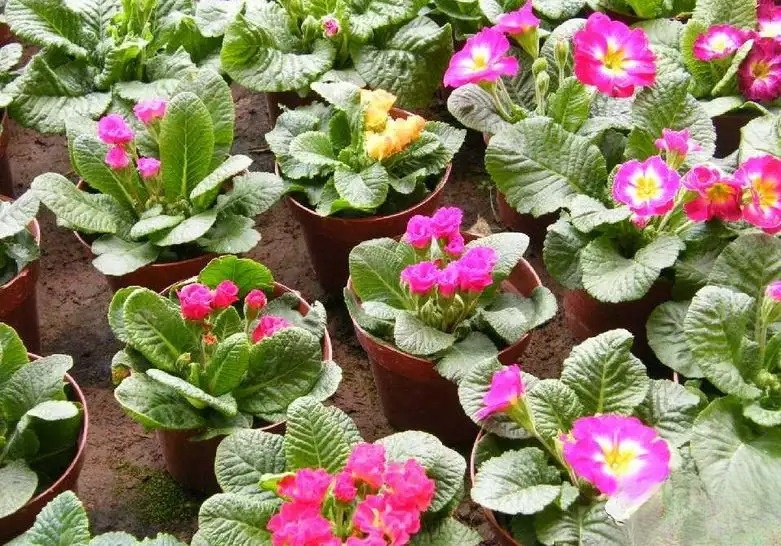
Catharanthus roseus
Catharanthus roseus has many flowers, a long flowering period, and luxuriant flowers. It blooms continuously from spring to autumn, so it has the beautiful name of "everyday spring". Some places also call it four-season spring, clock flower, and wild geese coming. It is a subshrub of the genus Vinca in the Apocynaceae family. It has high ornamental value, but the whole plant is toxic and needs to be considered. If eaten by mistake, it will cause symptoms such as leukopenia, thrombocytopenia, muscle weakness, and paralysis of the limbs.
-soil-
Catharanthus roseus can be grown in most soils, but saline-alkali soil is not suitable. Sandy soil with good drainage and air permeability is better.
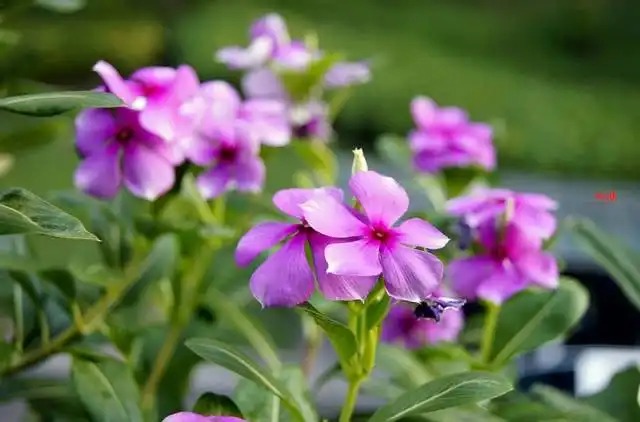
- Fertilization -
When fertilizing, you can use compound fertilizer and liquid fertilizer alternately every ten days. Try to spread a layer of base fertilizer at the bottom of the pot soil of the vinca flower to ensure the nutrient content of the pot soil.
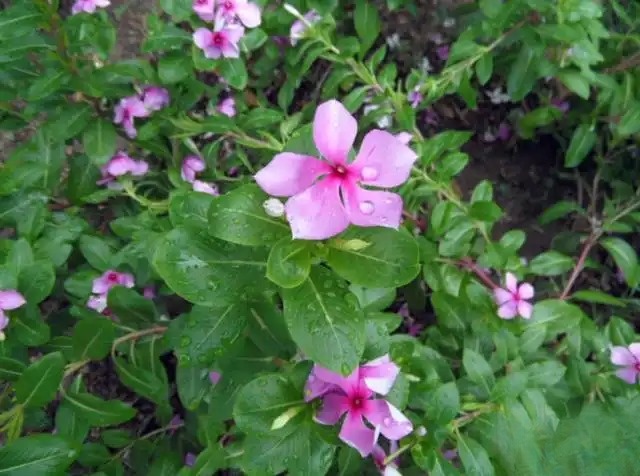
- Watering -
Catharanthus roseus is afraid of waterlogging. Do not water the pot soil too much, as excessive moisture will affect its growth and development. Especially for plants that spend the winter indoors, watering should be strictly controlled. It is better to keep it dry, otherwise it is very easy to freeze. For open-field cultivation, pay attention to timely drainage during summer showers to avoid waterlogging and the death of the entire plant.
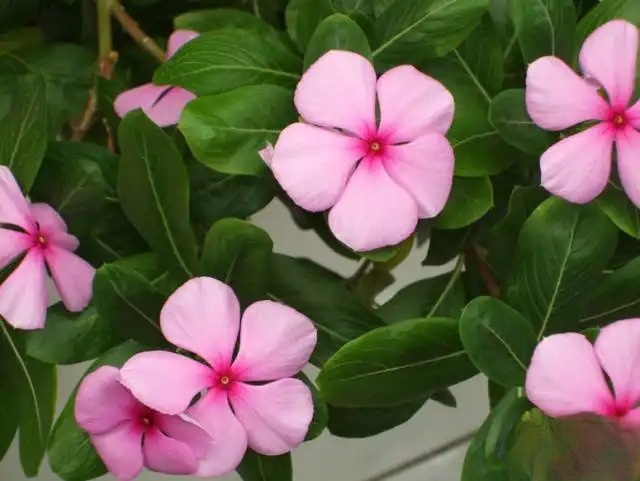
-illumination-
Catharanthus roseus is a light-loving plant that must have sufficient sunlight during its growth period. Its leaves are green and shiny, and its flowers are brightly colored. If it grows in the shade for a long time, its leaves will turn yellow and fall off.
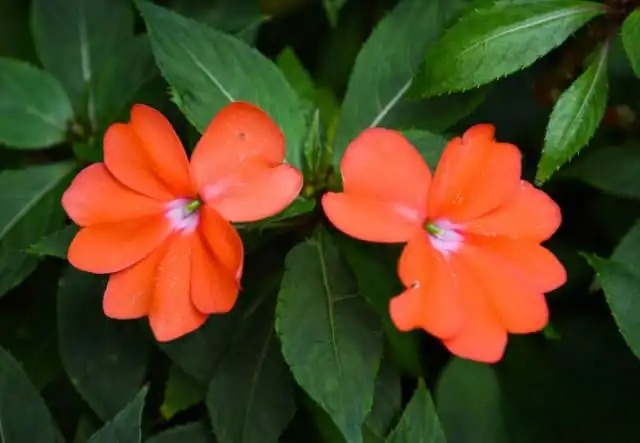
-temperature-
It likes a warm, slightly dry and sunny environment. The suitable temperature for growth is 18-24℃ from March to July, 13-18℃ from September to March of the following year, and the temperature in winter is not lower than 10℃.
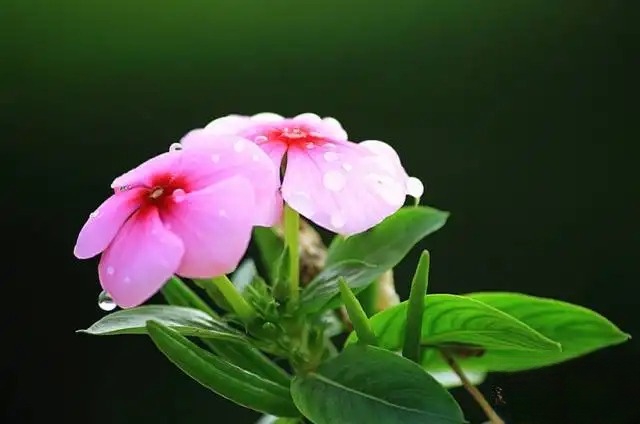
-prune-
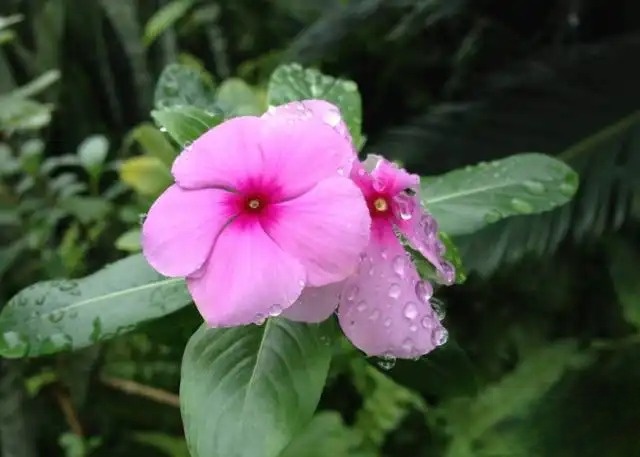
-Reproduction method-
Vinca roseus is usually sown in spring from March to May, and the temperature is better when it is above 20℃. The medium is preferably made of peat + perlite at a ratio of 3:1, or leaf humus, and 500-600 times of carbendazim solution is used to irrigate (sterilize), and the seedling container is placed in a south-facing sunny place.
Sowing should be covered with fine sand, and the seeds should not be exposed to direct light. Water with a fine spray bottle, cover with a film or straw mat to keep the soil moist, and the seedlings will emerge in 7 to 10 days. After the vinca seedlings emerge, gradually increase the light.
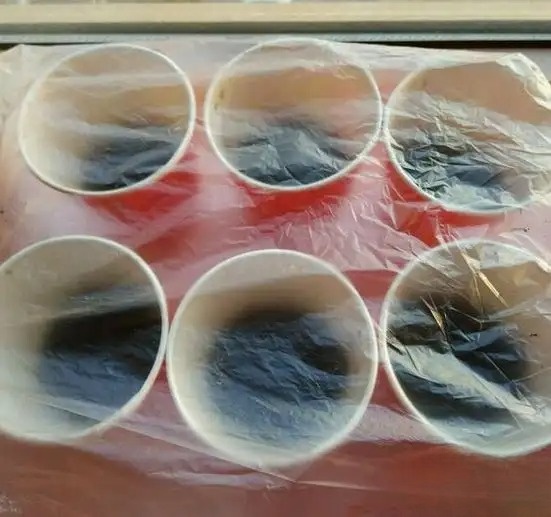
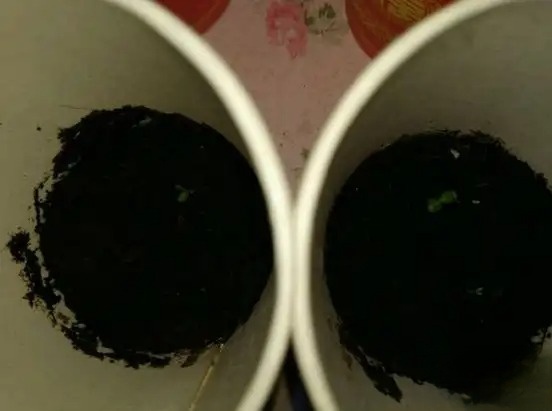
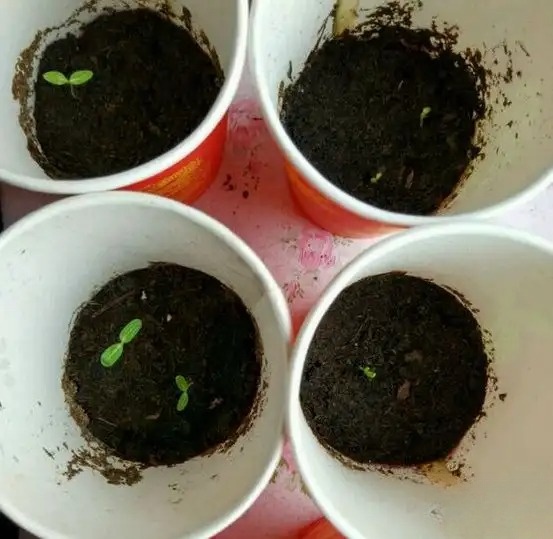
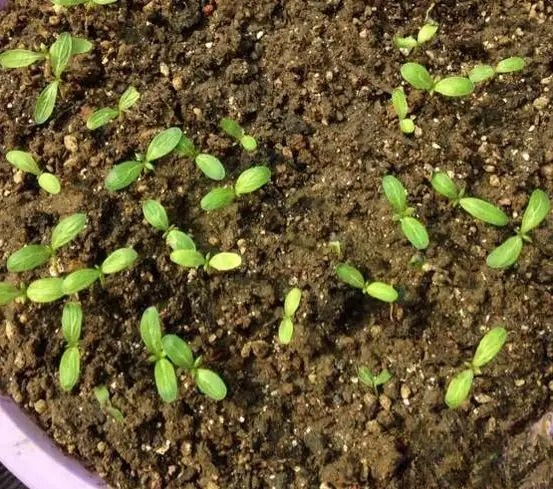
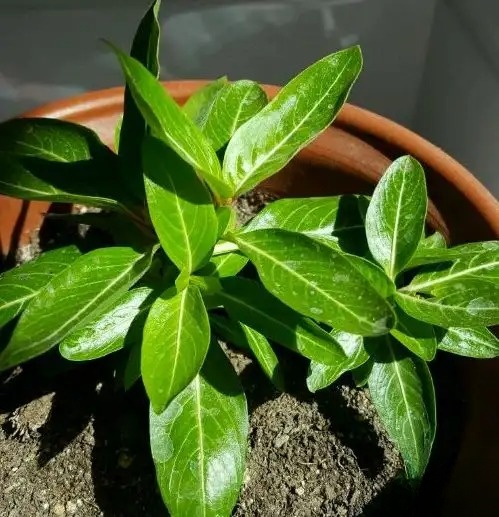
Cuttings are mostly carried out from April to July. When propagating by cuttings, healthy and pest-free young shoots should be selected as cuttings. Generally, young shoots with a length of 10 to 12 cm at the top of the plant are selected, and the length of the cuttings should be 5 to 7 cm. The cutting medium should be a mixed medium of plain sand, vermiculite, and peat. A small mud ball is wrapped at the base of the cuttings, and the cuttings are placed in a cold bed at a room temperature of 20 to 24°C. After about 20 days of rooting, the cuttings can be transplanted into pots after they have taken root and survived. Because the growth of seedlings propagated by cuttings is not as good as that of sowing seedlings, it is rarely used in cultivation.
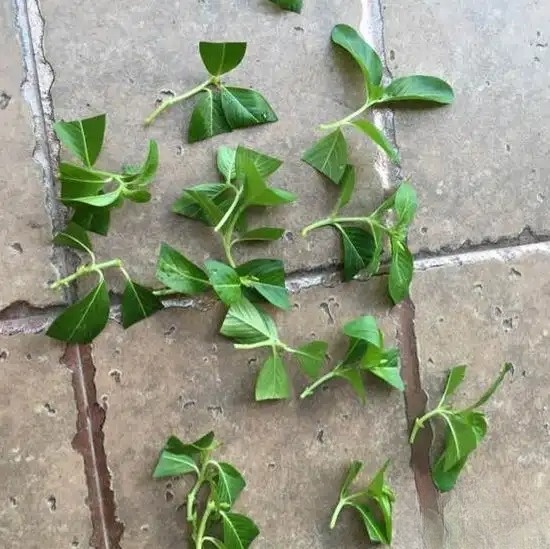
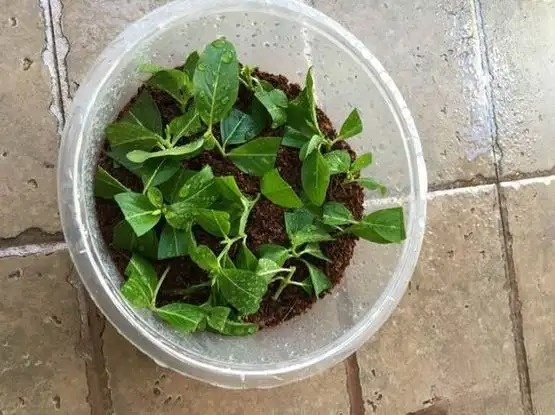
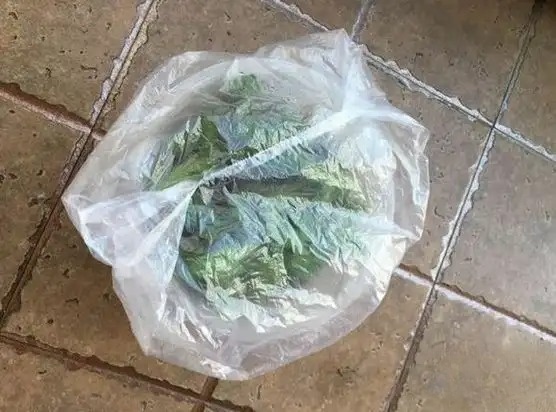
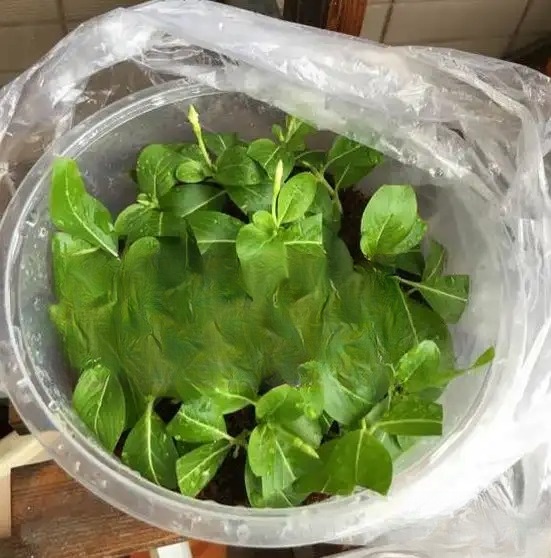
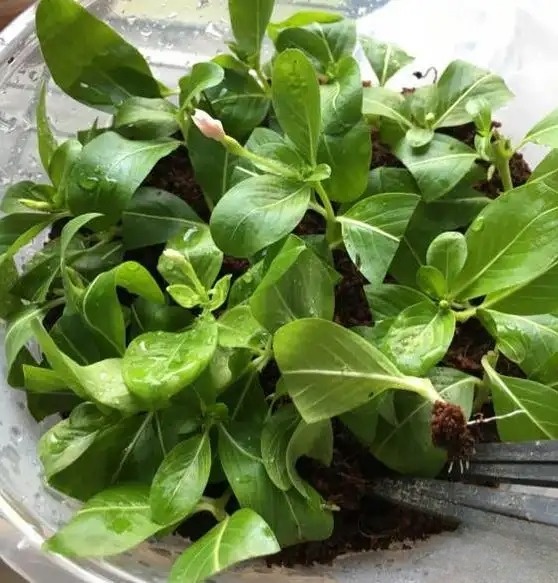
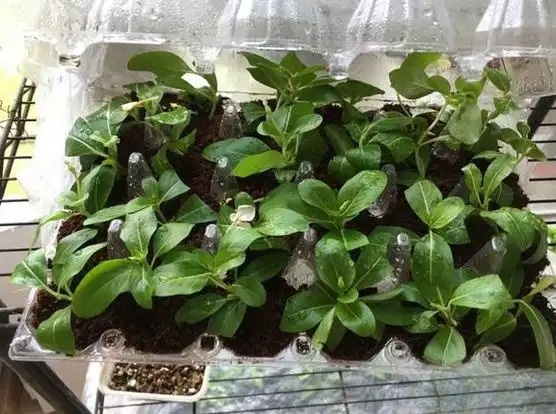
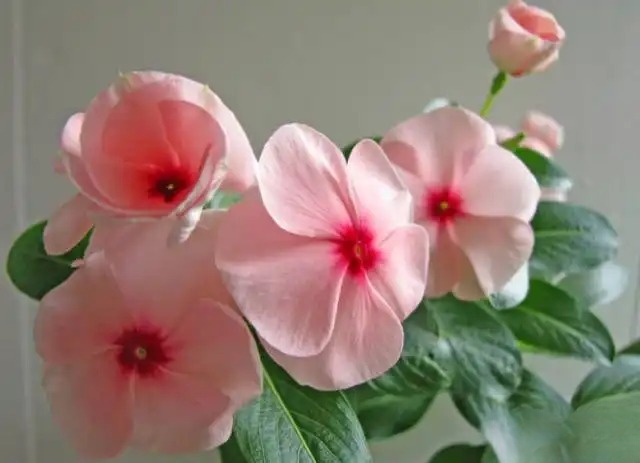
Four kinds of spring flowers
Each one is more beautiful than the other!
If you like it, come get one!
Show it to flower lovers in need!